I made the pilgrimage to Japan for the first time this March, fulfilling a life-long dream to see the birthplace of some of my favorite entertainment. I could go on and on about the adventures I had, but today I want to focus on what’s really important: the games!
These days, you and I are priveleged with anime simulcasts and English translations of popular media, but there is still a great deal of creativity that is locked behind a language barrier.
The tabletop roleplaying game (TTRPG) community, in particular, has developed almost independently of the West, even more niche there than here. There is a great deal of Japanese game design we never get to see over here, so I knew right away where I had to go in Japan: Yellow Submarine.
Yellow Submarine is a hobby shop with locations all over Japan, though the one most concerned with tabletop RPGs is located in Akihabara (or “Akiba”) prefecture in Tokyo. Most of the games I will be discussing below were found in Yellow Submarine, with loads more that I will not be able to get into in a single newsletter.
TRPGs
Fun fact: in Japan they say “table-talk RPG” (TRPG) instead of “tabletop RPG.” Personally, I like this acronym better. Not only is it shorter, but I feel like talking is a far more important component of RPGs than the table!
Sword World 2.5
Sword World was Japan‘s first original TRPG,a d6-based fantasy game that quickly eclipsed D&D in popularity.
The rules, now in their 2.5 edition, are spread out over three volumes, in the pocket-sized format common to Japanese books (just look how tiny it is in my hands!). There is very little art on the inside, making them a somewhat imposing mass of text. However, they were also dirt cheap, at only ¥900 per book - roughly $9 - meaning all three books cost less than a single volume of the D&D Player’s Handbook!
While not officially available in English, fan translations do exist, and I encourage you to seek them out! The game is a fascinating look into a gaming space developed completely independently from the West,
If you want a deeper dive into Sword World and its history, I highly recommend reading this article by Daniel Kwan, host of the Podcast Asians Represent.
Call of Cthulhu
Surprisingly, the most popular TRPG in Japan is not D&D or Sword World, it’s the eldritch horror investigation game, Call of Cthulhu by Chaosium. The reasons for this are unclear, though I believe it has to do with certain popular anime bringing it to public consciousness (which would never happen in the West. ~cough cough~ Stranger Things).
The proliferation of “replays,” the Japanese equivalent of “actual plays” in the West, have also contributed to its popularity. Needless to say, I had to get my hands on a Japanese-original CoC scenario. I’m looking forward to sitting down and translating “Dear Violet” at some point.
Board Games
There were a lot of board games I recognized in Japan. Many popular games from the West could be found just as easily in Japan.
But there were plenty of Japanese originals as well. There was even a dedicated section for Japanese-made games that had been translated into English!
Viking See-Saw
Viking See-Saw, part of the Funbrick series of games by Itten, was released as part of a global Kickstarter back in 2022. It’s a delightful game in which players take turns stacking cargo on a precariously-balanced ship. Any time the boat tips over, the player loses their turn and must pick up any lost cargo.
The game pieces consist of everything from metal cubes to plastic diamonds. Learning how to push the weight limit is a large part of the strategy. The game also includes a bundle of hair ties to keep your pieces from rolling off the table, which I think is a genius move. I now want hair ties as part of my regular gaming kit.
Yura Yura Penguin
Another gravity-defying game, this one designed by Ryoko Yabuchi, sees you making an iceburg and populating it with penguins and pieces of ice. You start by placing a circular ice card on top of a folded iceberg. The ice cards tell the next player to add either a penguin, an ice block, or another iceburg to the tower. If you play all the cards from your hand, you win. If the tower falls, you lose. It’s like reverse-Jenga!
Murder Mystery Puzzle Games
There were a lot of murder mystery games big and small available. While I don’t think any of them fall into the “jubensha” or “script murder” genre that has become popular in China in recent years (which I am itching to write about in a future article), they look to offer a variety of puzzling mysteries to work on. Now if I could only read them…
Blade Rondo: Cross Lords
I bought this game solely for the beutiful artwork. Blade Rondo, as I’ve come to learn, is a series of competitive card games that can be played one-on-one or - unusually for this kind of game - completely solo. There was a crowdfunding campaign on gamefound.com that translated most of the previous Blade Rondo games into English back in 2022, but it looks like this current entry, Cross Lords, is still a Japanese exclusive.
Other Blade Rondo games can be purchased in English from Japanime Games.
BONUS: For buying the Blade Rondo game, I also received this free folder from Yellow Submarine:
Meow Oracle
I actually don’t know anything about this game, but my girlfriend loves cats, so we HAD to get it…
Arcade Games
Before I fell in love with TTRPGs, video games were my first love. Since I was a child I’ve dreamed of experiencing a Japanese arcade (or gaming center, as they’re called). While most U.S. arcades died out in the 90s, Japanese arcade culture continued to develop, diminished, perhaps, but bursting with creativity.
The arcade games I could find fell into the following five categories, sorted by apparent popularity:
UFO/Crane Games
These were EVERYWHERE! (Shoutout to that one guy that 360-no-scope-5D-MacGyvered that set of headphones for his girlfriend. That was dope.)
Rhythm Games
Classics such as Dance Dance Revolution and Rock Band mixed in with some of the most bizarre stuff I’ve ever seen. I will never be coordinated enough to do half of what a Japanese teenager can do on these things. Taiko no Tatsujin is great though, highly recommend.
Collectible Card Arcade (Cardcade?) Games
I WISH I had taken a picture of these, because these are difficult to explain.
So, first of all, most Japanese arcade machines are connected to the internet. This is important, as it is what seperates them from their classic counterparts.
Some of the most popular arcade games these days are strategy games with a collectible card game component. None of these are in the West as far as I know.
Trading cards are bought physically from local shops. You can then play these cards on an arcade machine to add units and effects to a virtual strategy game. Do not ask me the rules, all I know is that I saw a lot of people with stacks of cards shifting them around a digital playmat to make things happen on screen. It was intense.
Traditional Arcade Games
Fighting games have always been a major part of arcades. Unlike classic arcade games, many modern fighting games seem to be ports of console games. I saw lots of Street Fighter VI and Tekken, both of which were released on Playstation and Xbox consoles years ago.
Even the original games feel like console ports. You can see me playing the game Jojo’s Bizarre Adventure: Last Survivor below. While an Arcade-exclusive, the controls feel like your typical Playstation controller, and the gameplay is a standard battle royale game like Apex Legends or Fortnite.
The wild thing to me here is seeing modern game design present in an arcade setting. It makes me wonder if we could see modern console games appearing in Western arcades someday.
Wholly Unique Games
These are what I came for: games unlike anything else I’ve ever played. Games only available in Japanese arcades. I would go back in a heartbeat, just to explore these games even further.
Gundam: Bonds of the Battlefield
Look at it! LOOK AT IT!!! Are you not entertained?!? I’m not even a Gundam fan and I had a blast at this cabinet. Not pictured is the shit-eating grin I flashed after rocket-booting into an enemy’s face and slicing him in half with my robo-sword.
A triple-monitor experience in which you pilot a giant fighting mech! What’s not to love? The graphics were a little dated, but who cares when you’re this close to the action! This was exactly the kind of arcade experience I was looking for in Japan, and I am so glad I got to experience it.
Wonderland Wars
This one was interesting. Wonderland Wars is a strategy MOBA game that could EASILY have been mistaken for some kind of mobile port. The graphics were so-so and the gameplay brain-dead simple. It felt like a gacha game you’d find on the apple store.
What made it stand out, though, was its incredibly unique interface. You control your character with an analog stick disguised as a compass (pictured below), but everything else is controlled by a “magic wand,” a stylus that you use on the game’s touch screen to target enemies, cast spells, and make selections.
The arcade treatment turned what was otherwise a bog-standard MOBA game into an engaging and magical experience. The controls were fun to paly with, and the story - while basic - was full of characters and lore.
Oh yeah, there’s a STORY, and it’s wordy. A good half of my playtime was spent skipping through dialogue-heavy cutscenes, which one would expect from a mobile game, but not an arcade cabinet.
Concluding Thoughts
My time in the Japanese Arcade raised some interesting questions for me. Is there a place for arcade games in our modern gaming landscape? As much as I love console games, we seem to have lost the social connections that an arcade can bring. Even Wonderland Wars, a single-player mobile game with an arcade-cabinet glow-up, feels like a social experience when you’re doing it in a public place next to other weirdos playing similar games.
Given how MASSIVE the eSports and fighting game scenes are these days, doesn’t it make sense to bring back the classic arcade cabinets to let these players experience the things they are already doing in a community context? I don’t know, it’s a thought.
Announcements
It’s Candela Week!
Last year I wrote about Darrington Press’s new horror-investigation RPG, Candela Obscura, and the potential it has to change the games industry.
Well, it’s been almost a year since the game launched, and that change is slow in coming. Like most games, it is taking awhile to build an audience, and supplements to the game have yet to appear. But in celebration of their flagship TTRPG, Darrington Press is hosting a Candela Obscura Games Week!
Check out their Discord or your friendly local game store to find one of the many games being run between today and August 1st.
Rusty Lake Releases First Pen-and-Paper Escape Room!
Rusty Lake, creators of the popular (and free!) series of mind-bending escape room games, Cube Escape and Rusty Lake, just released their first ever pen-and-paper game!
Rusty Lake Untold - The Lab is the first in what is planned to be a series of pen-and-paper games that take Rusty Lake’s established escape room format and convert it to a tabletop experience. Taking cues from TTRPGs, one player acts as the game master, describing the rooms to the players, who then ask questions and investigate the rooms, solving puzzles and looking for tools to help them escape.
The game is available for free over at the Rusty Lake Untold website.
Coyote & Crow is Bookwyrms’ August Reading
The Bookwyrms TTRPG Reading Club, hosted by the Storytelling Collective, picks one TTRPG each month to study and discuss. Next month’s game is Coyote & Crow, a science-fantasy RPG set in a “First Nations alternate future where colonization never happened…created and lead by an all Native team.” This one’s been on my reading list for awhile, so I’m excited to talk about it.
IF Comp Looking for Donations
The 29th annual Interactive Fiction competition is right around the corner. This celebration of Narrative Design in text-driven video games relies on the support of generous donors to keep going.
Anyone wishing to support the competition may do so by donating to the Colossal Fund or supplying a physical prize to this year’s prize pool.
Next Time…
Next week is the busiest gaming weekend of the year: Gen Con! While I will have PLENTY to talk about after the four-day convention, you can get a taste of what’s to come as I share my wishlist for my Best Four Days in Gaming!





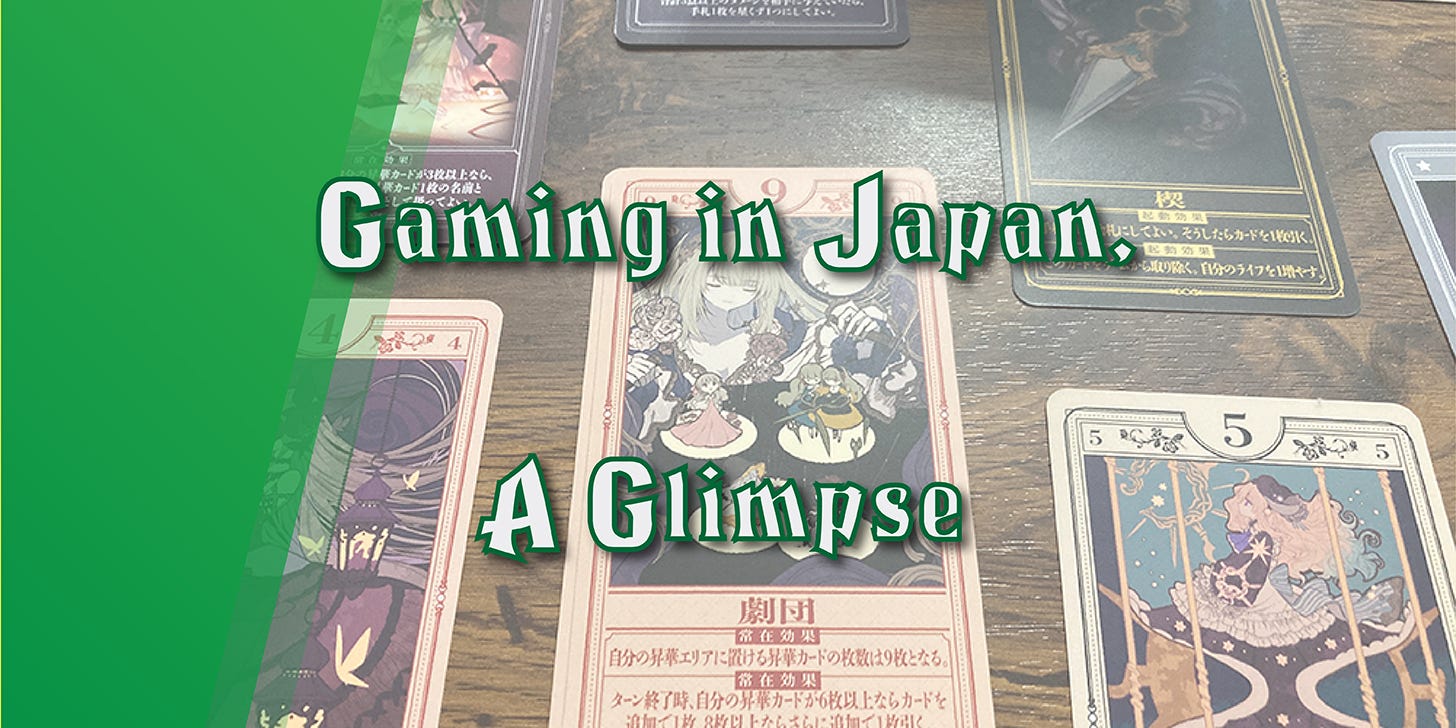

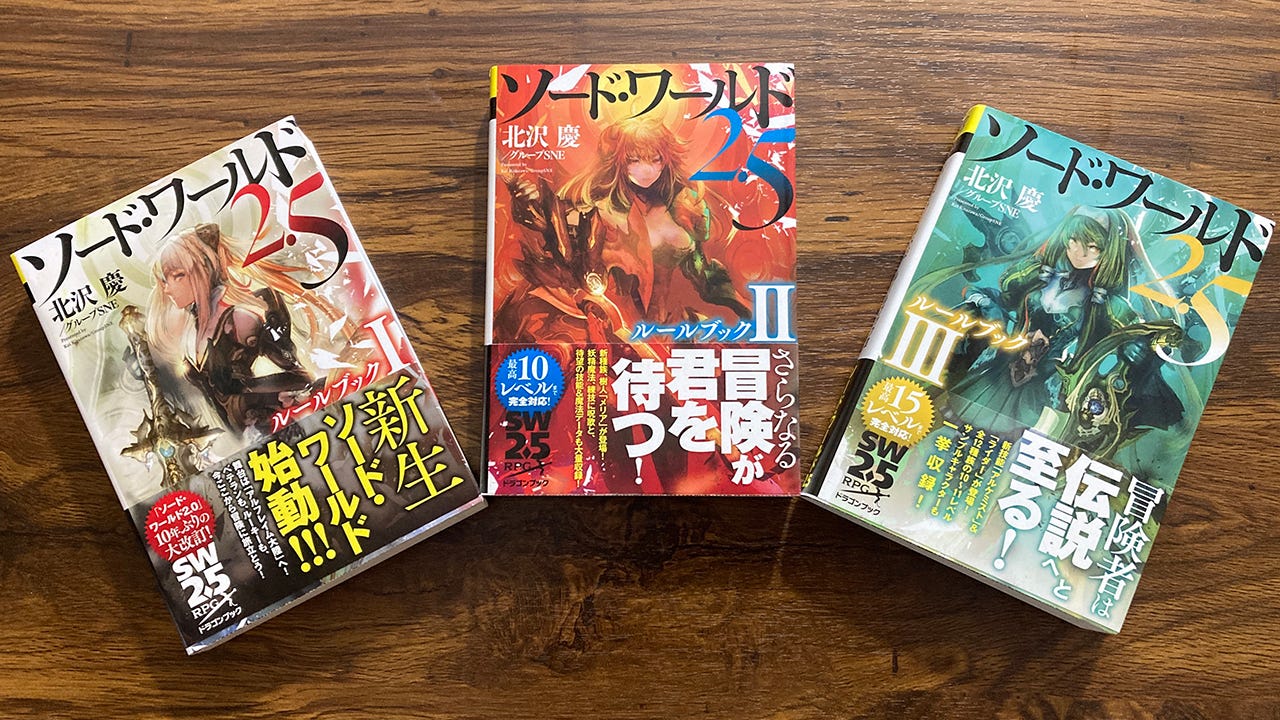
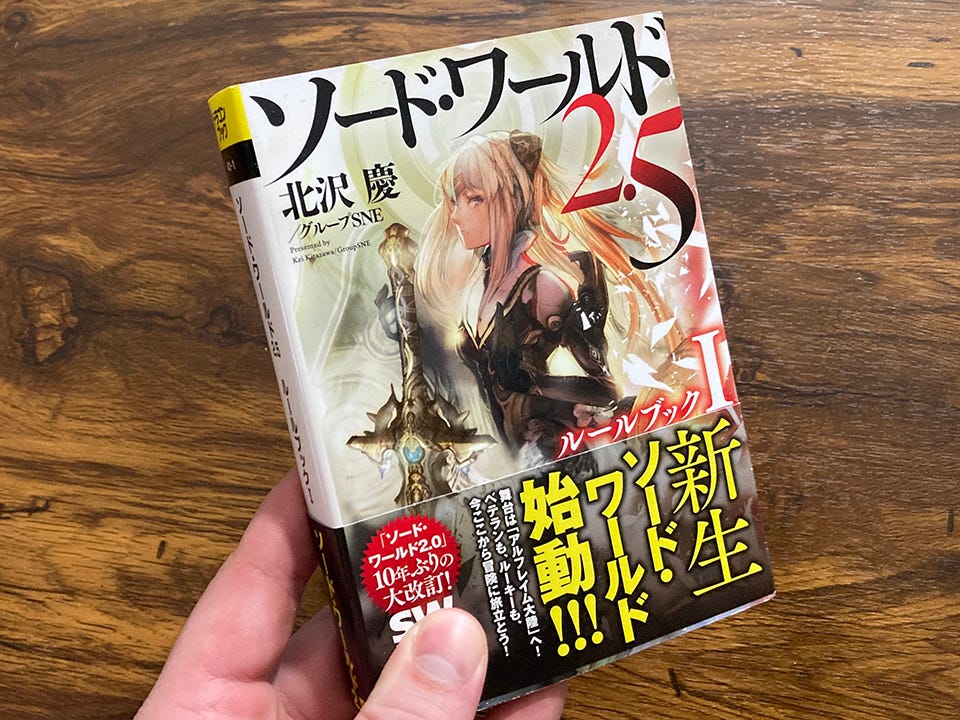

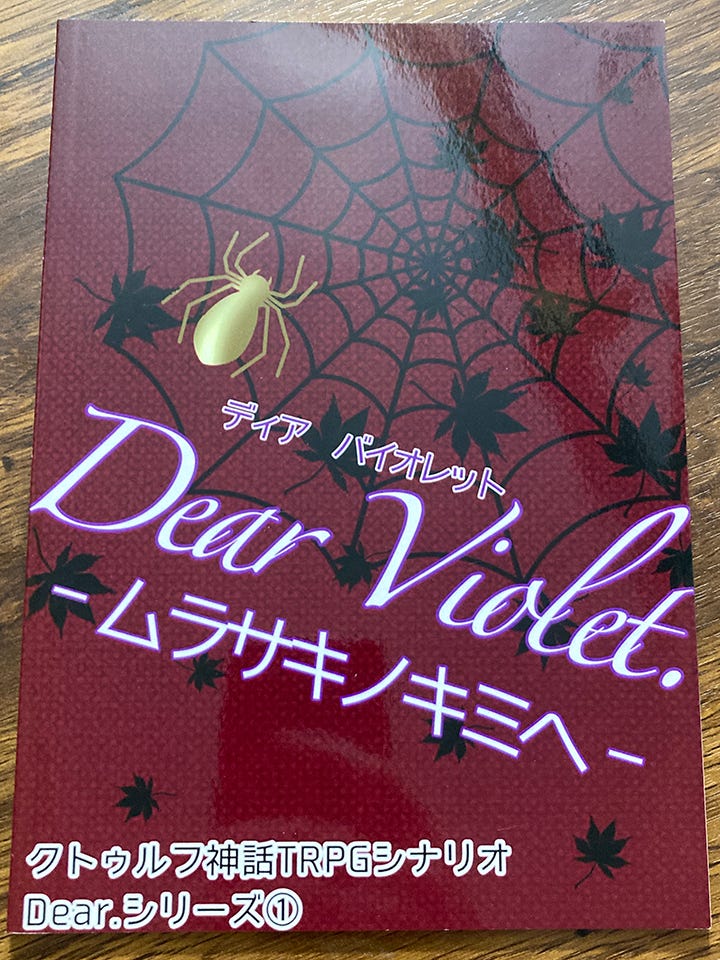
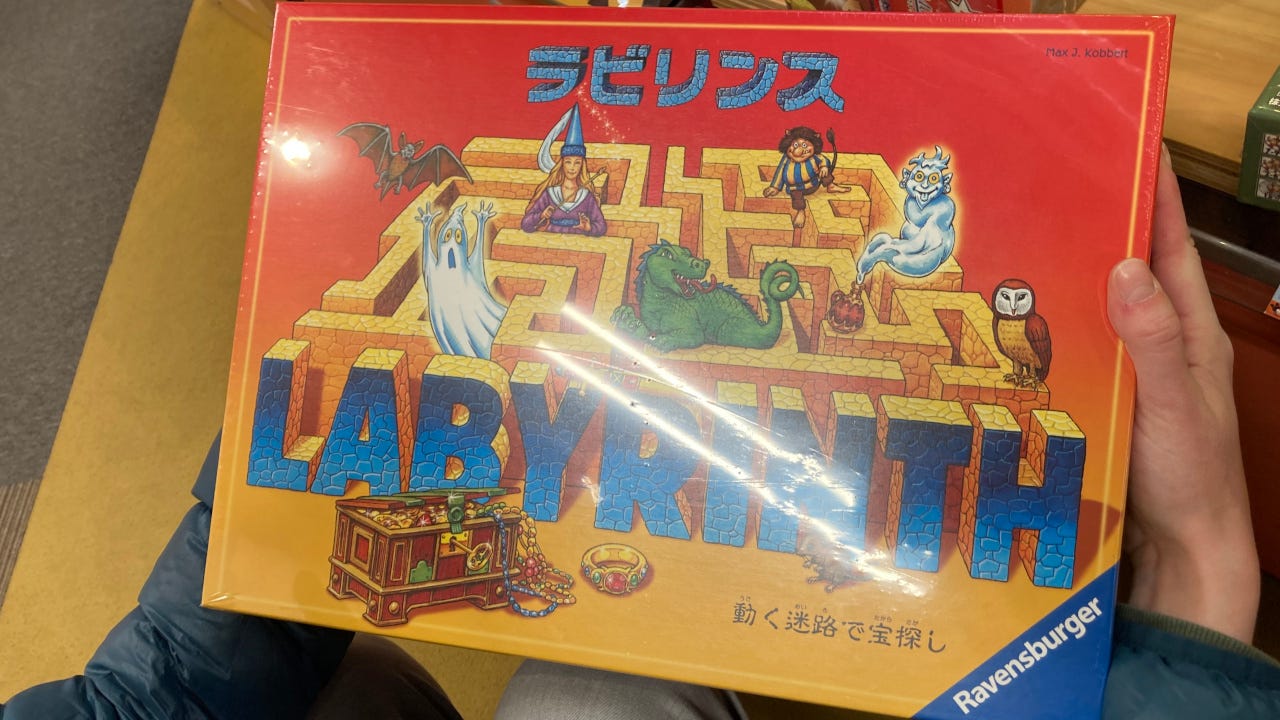
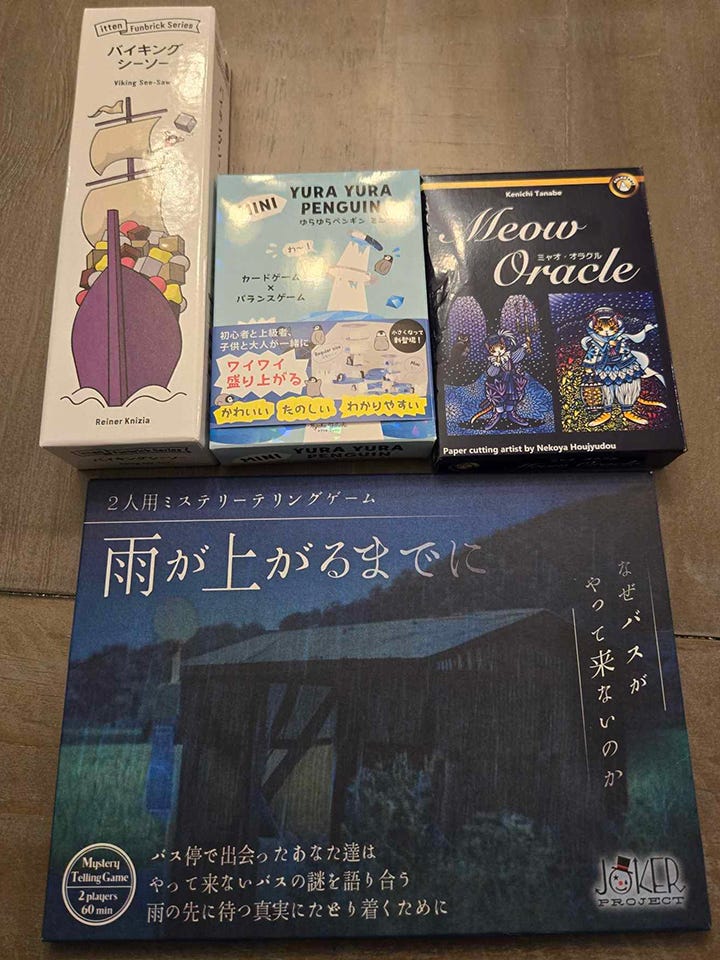
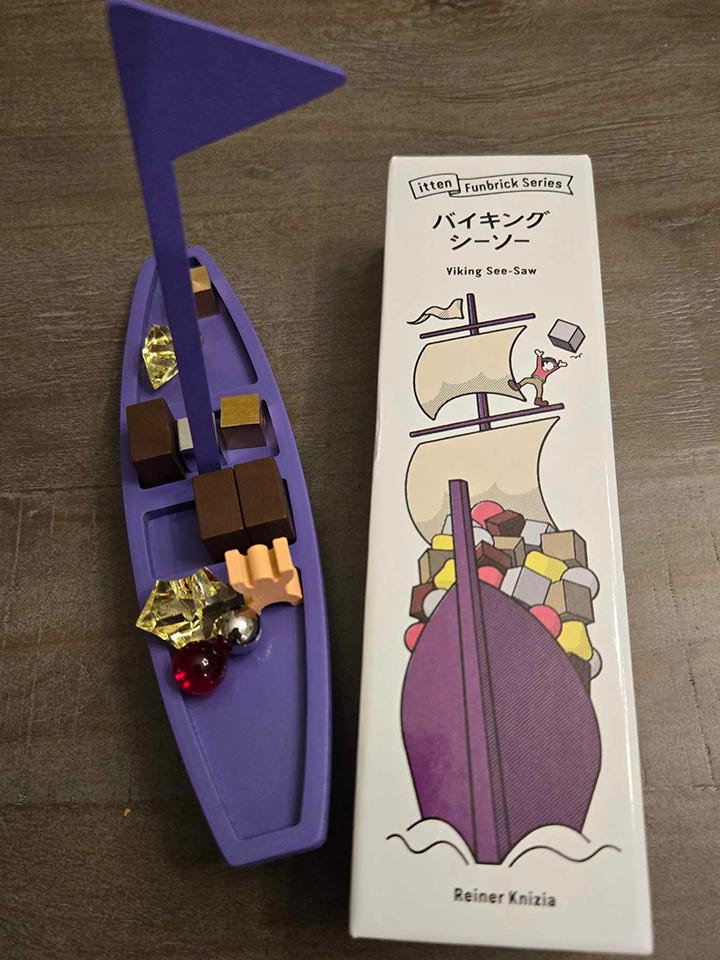
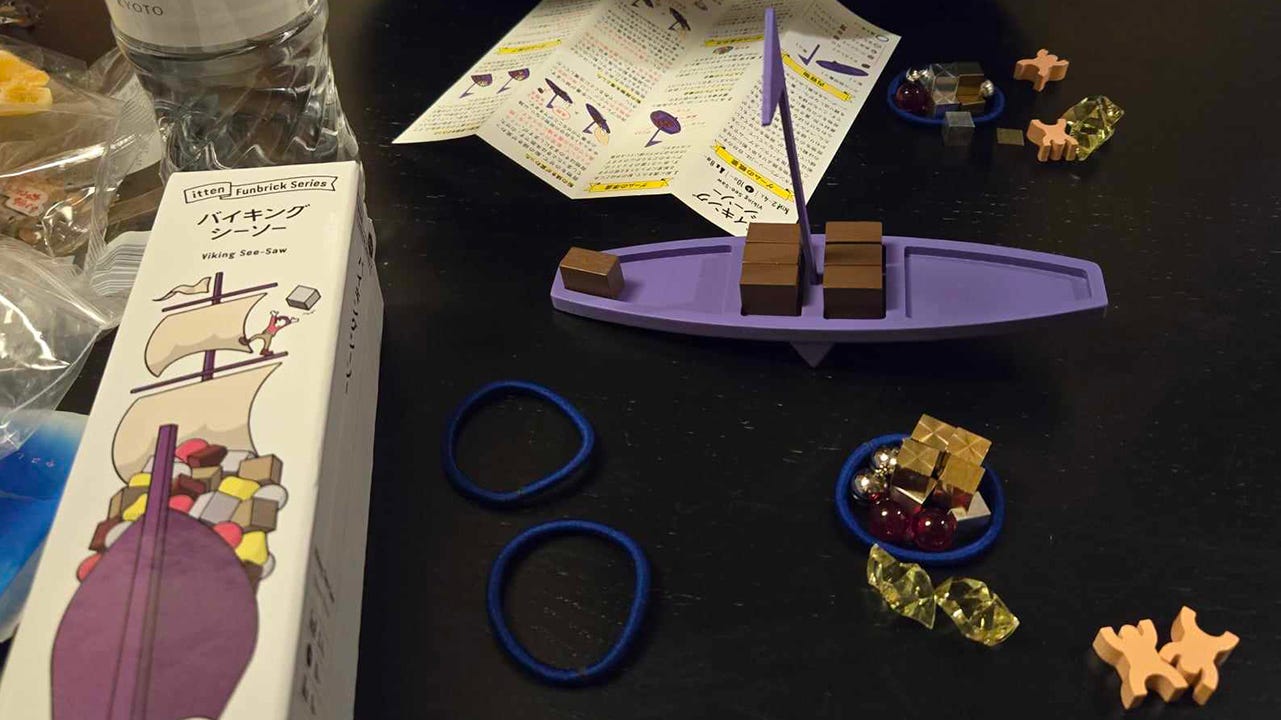
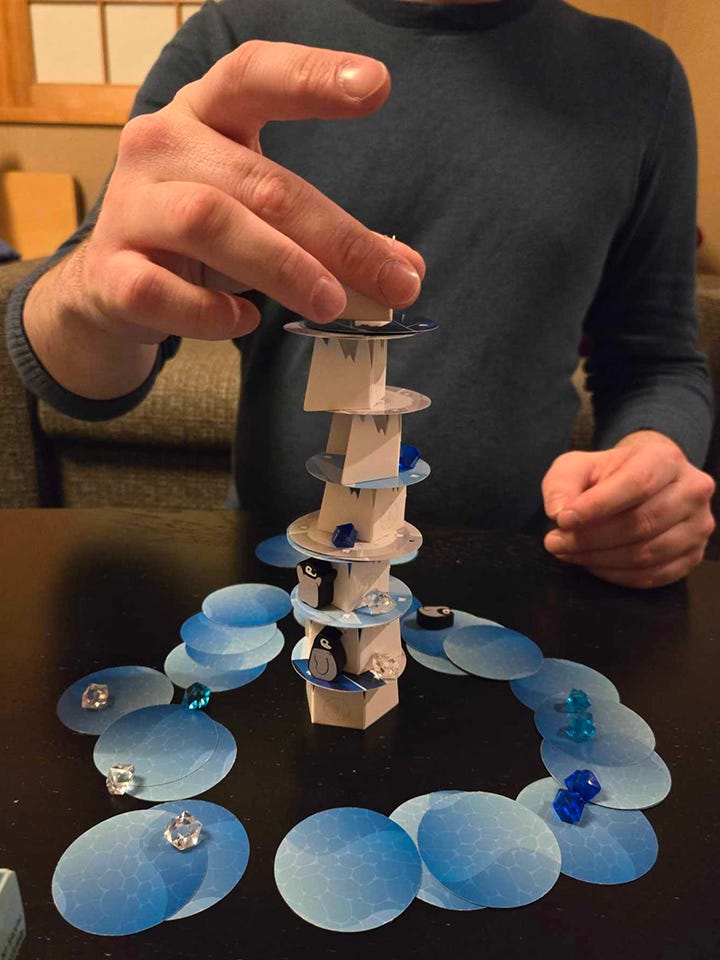
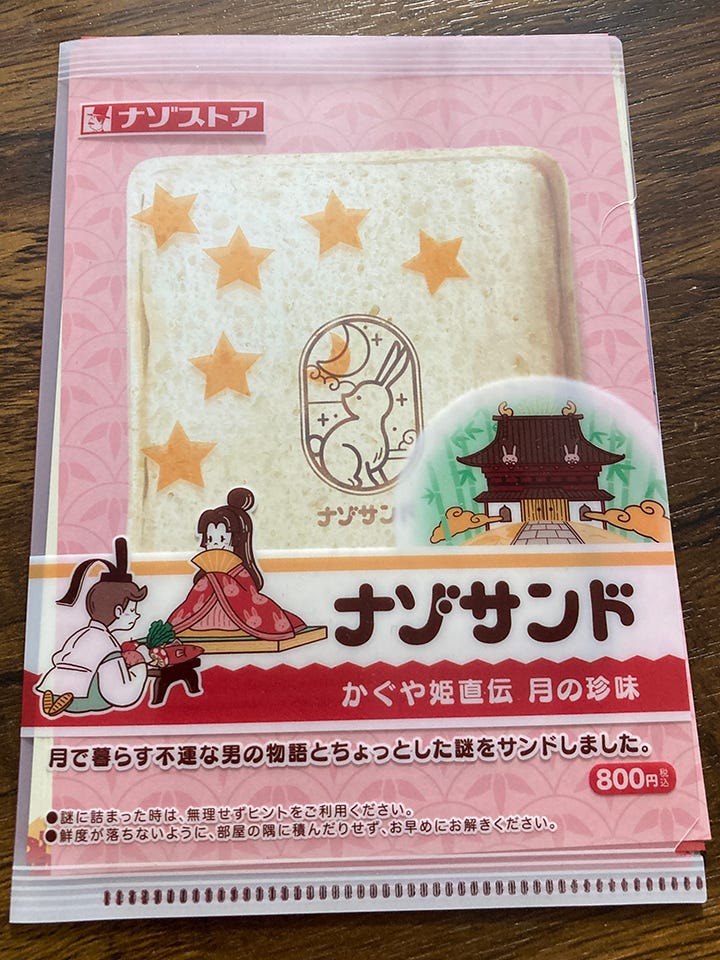
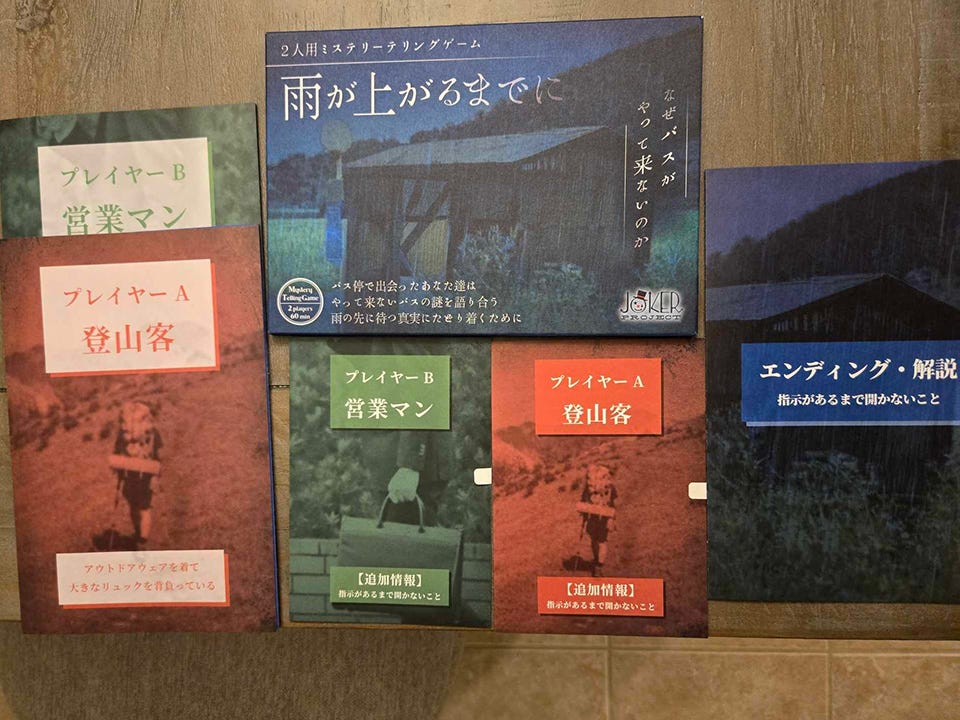
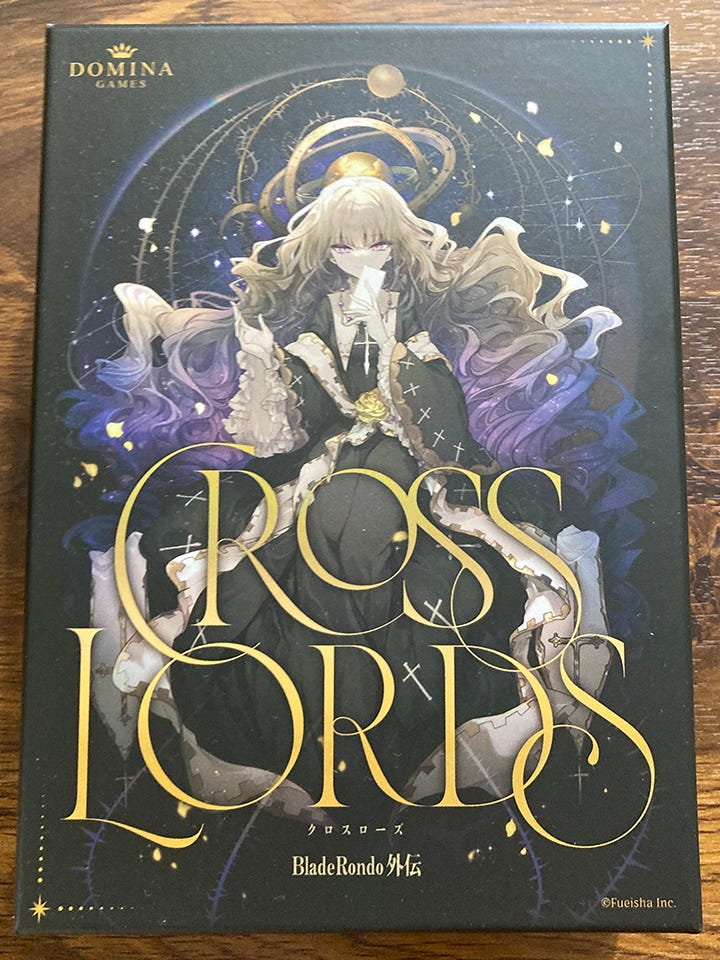
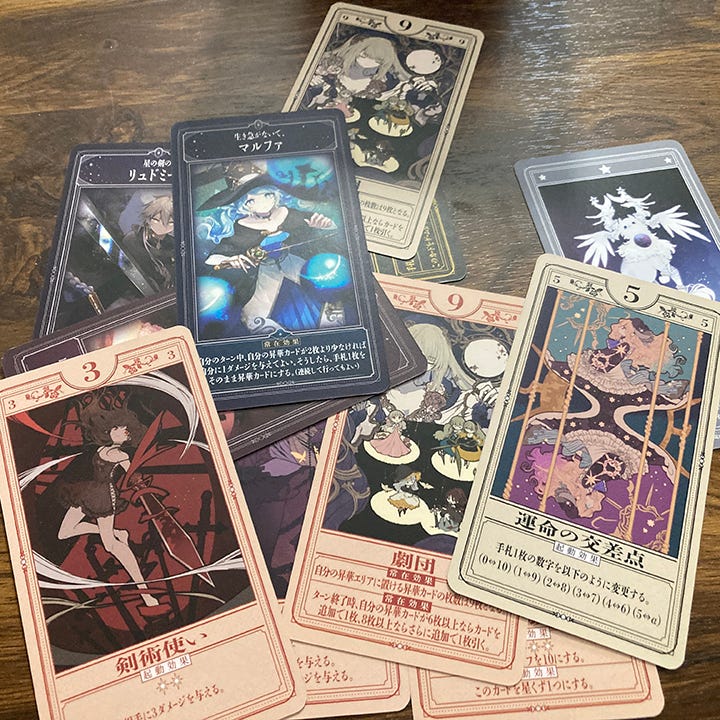
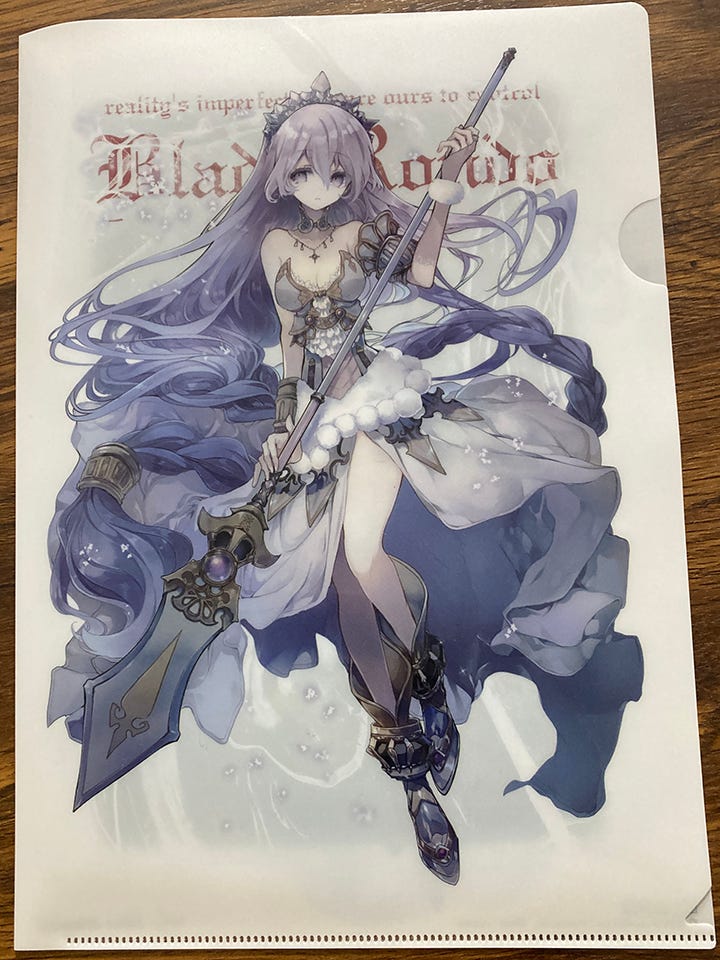
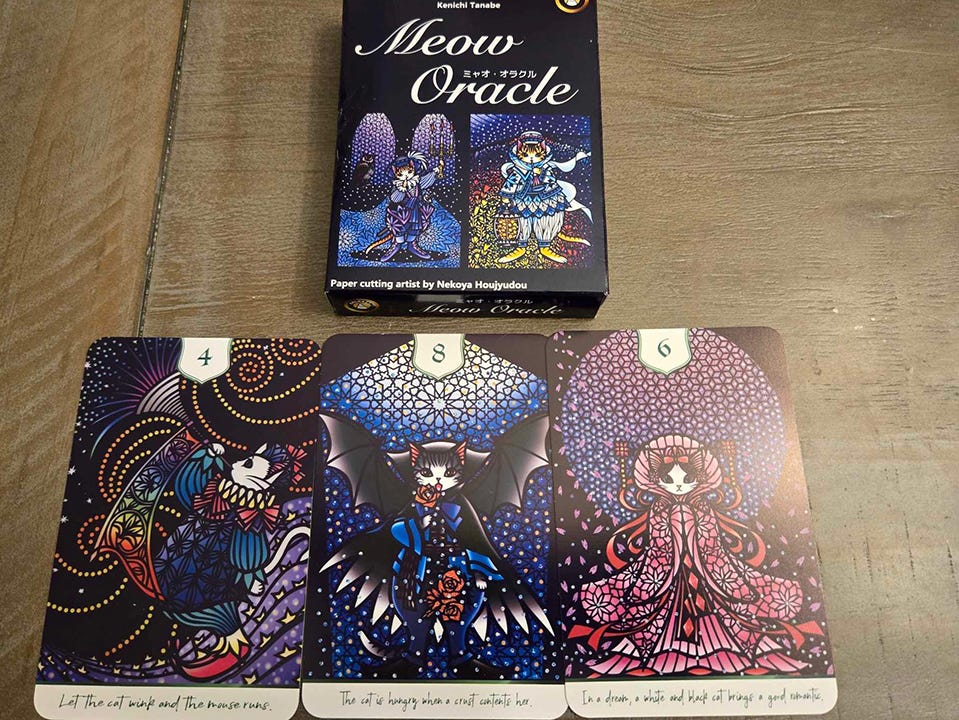

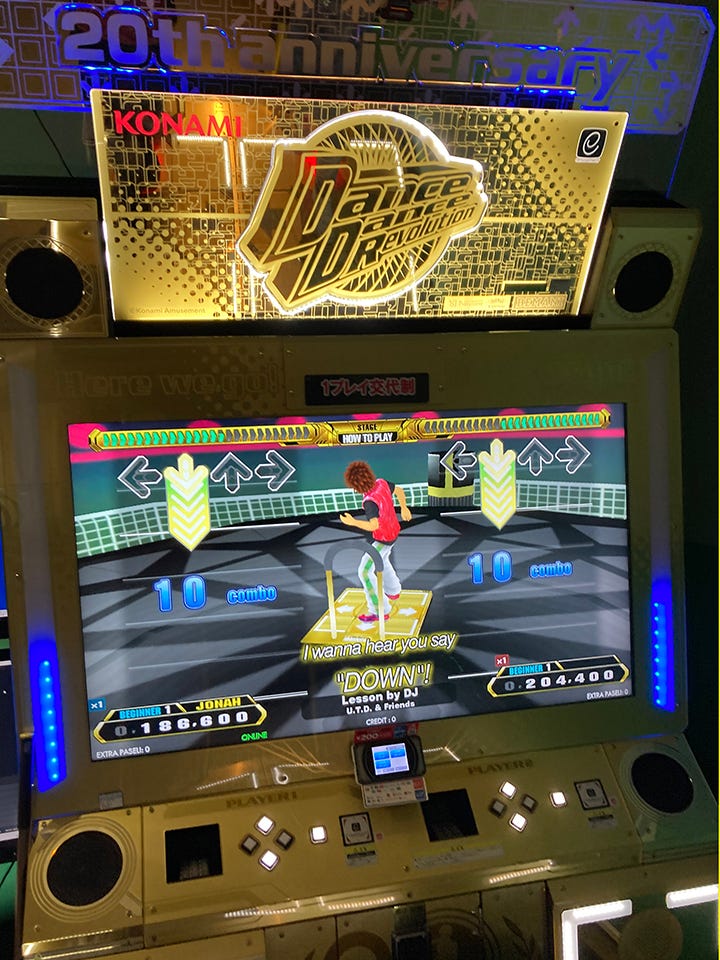
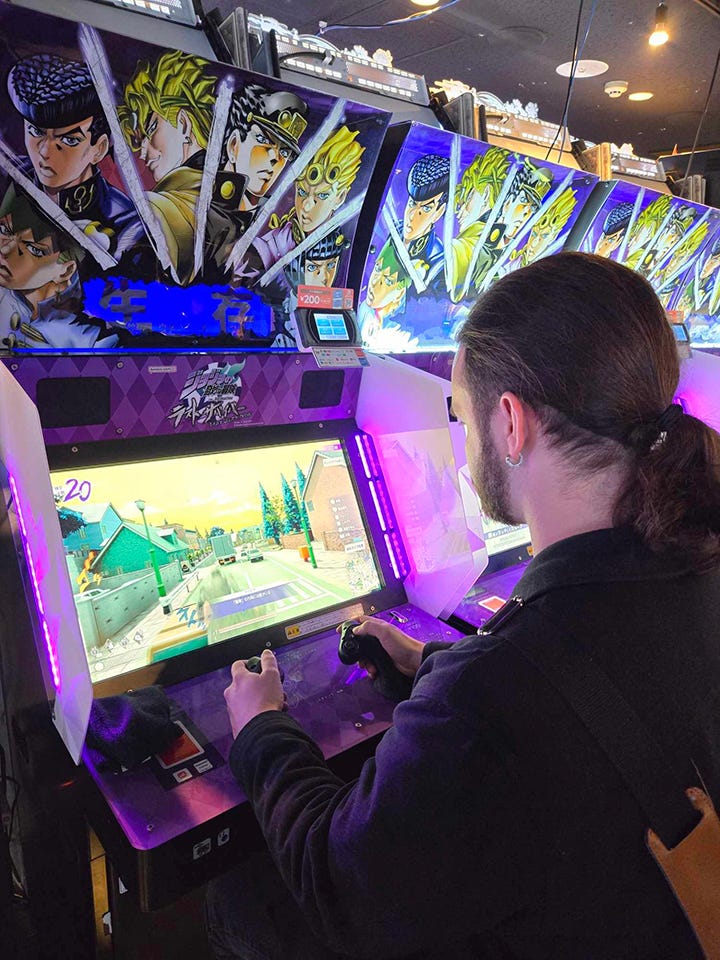
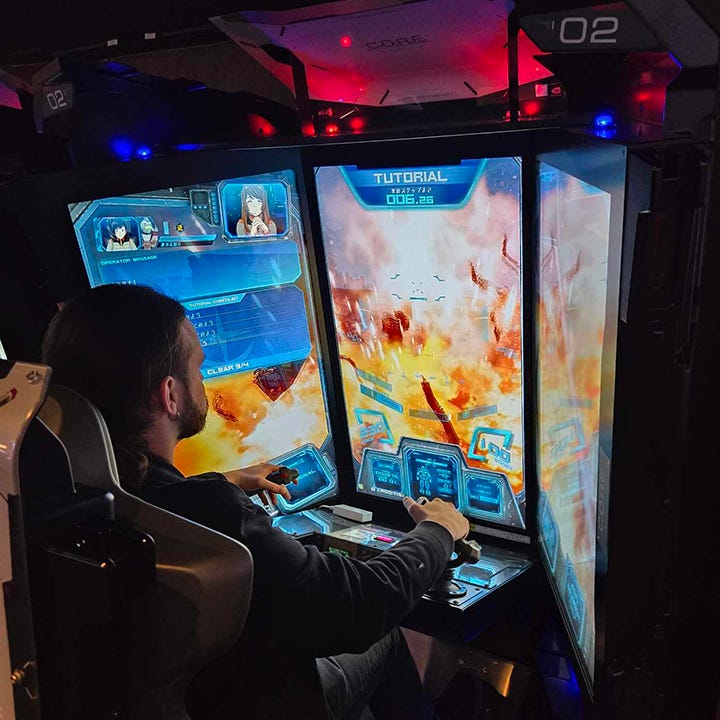
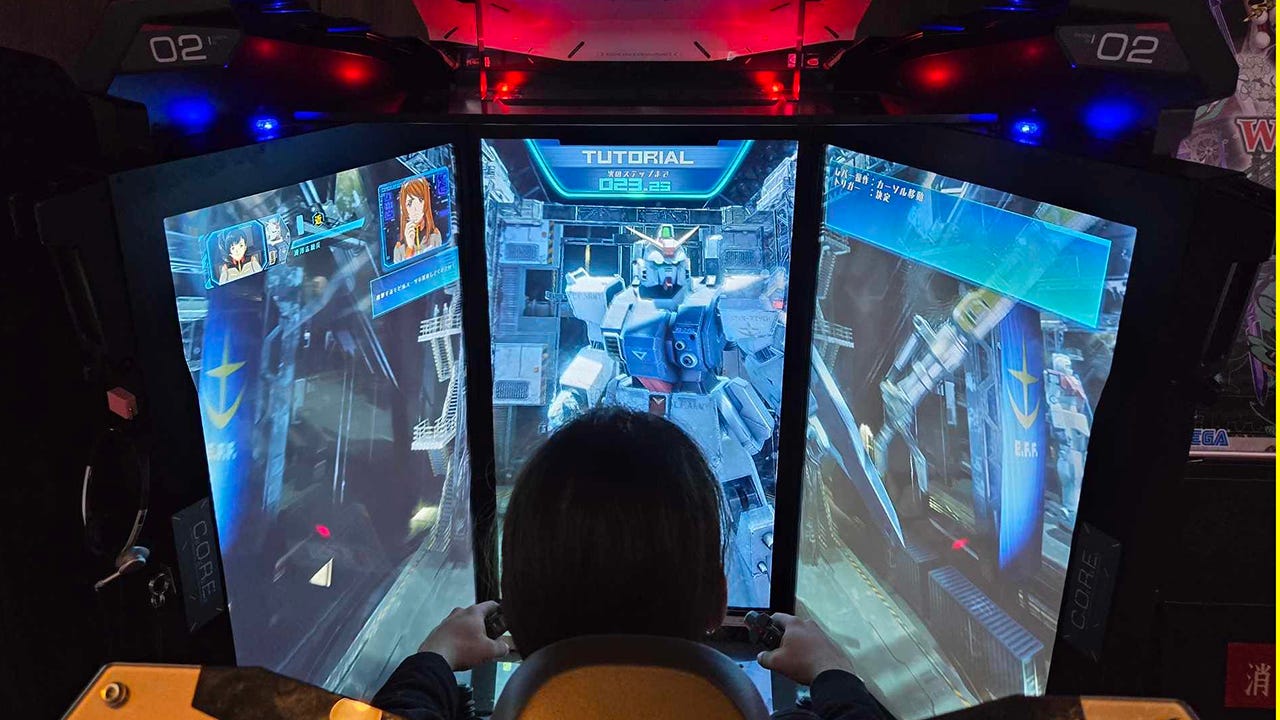
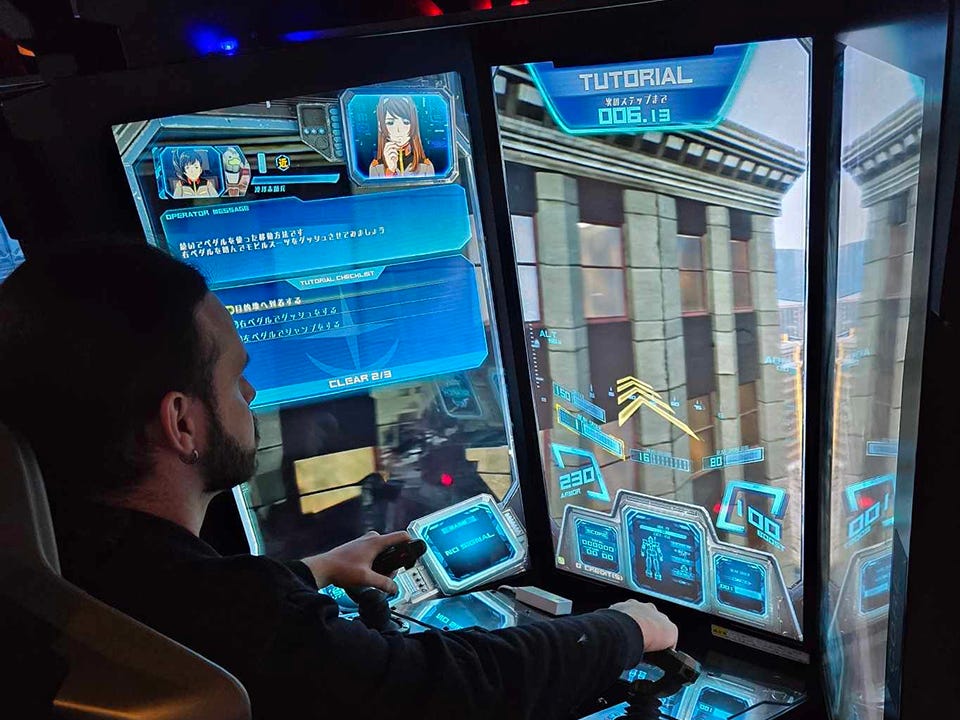
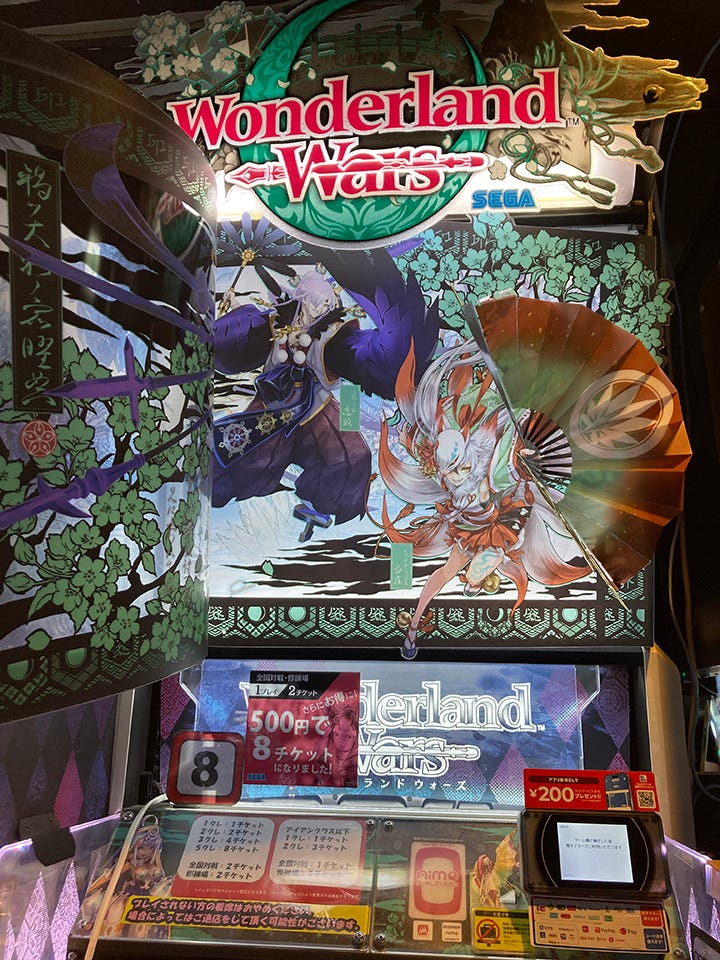
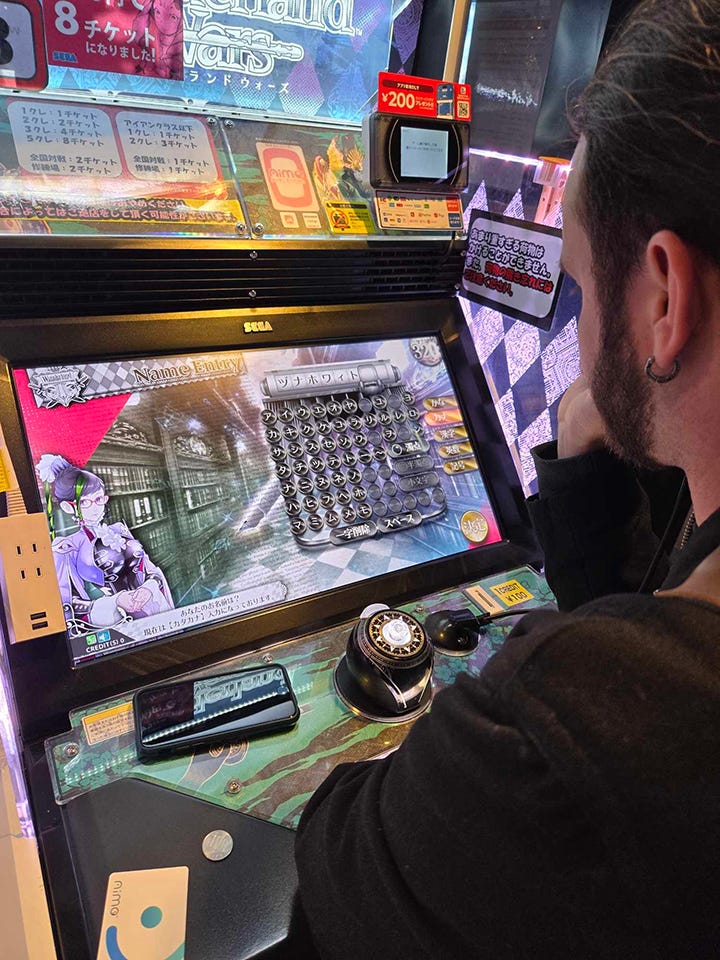
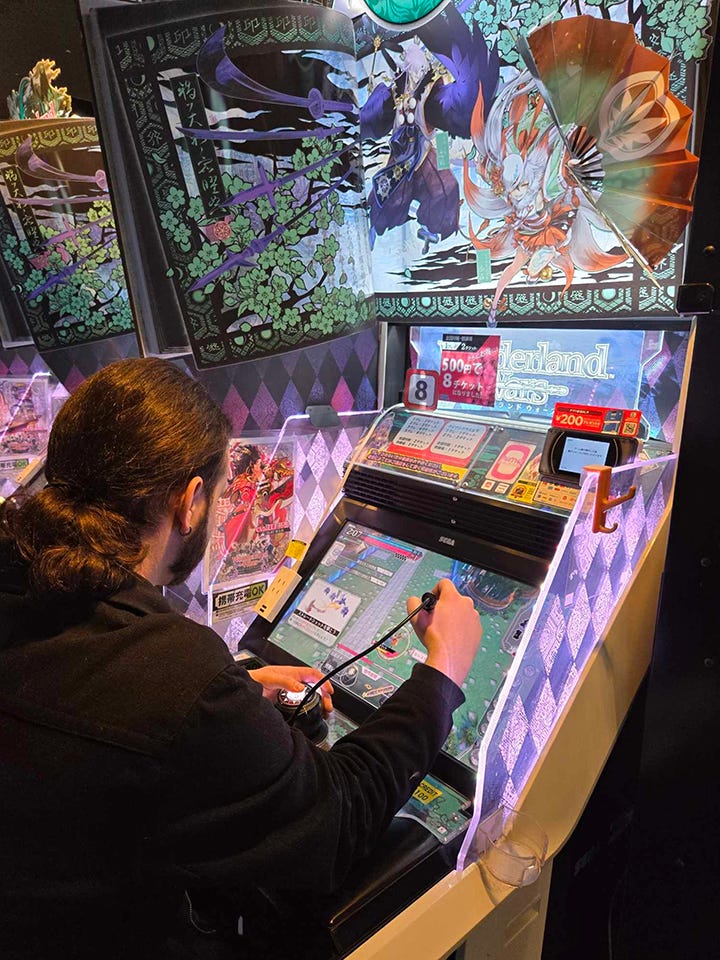
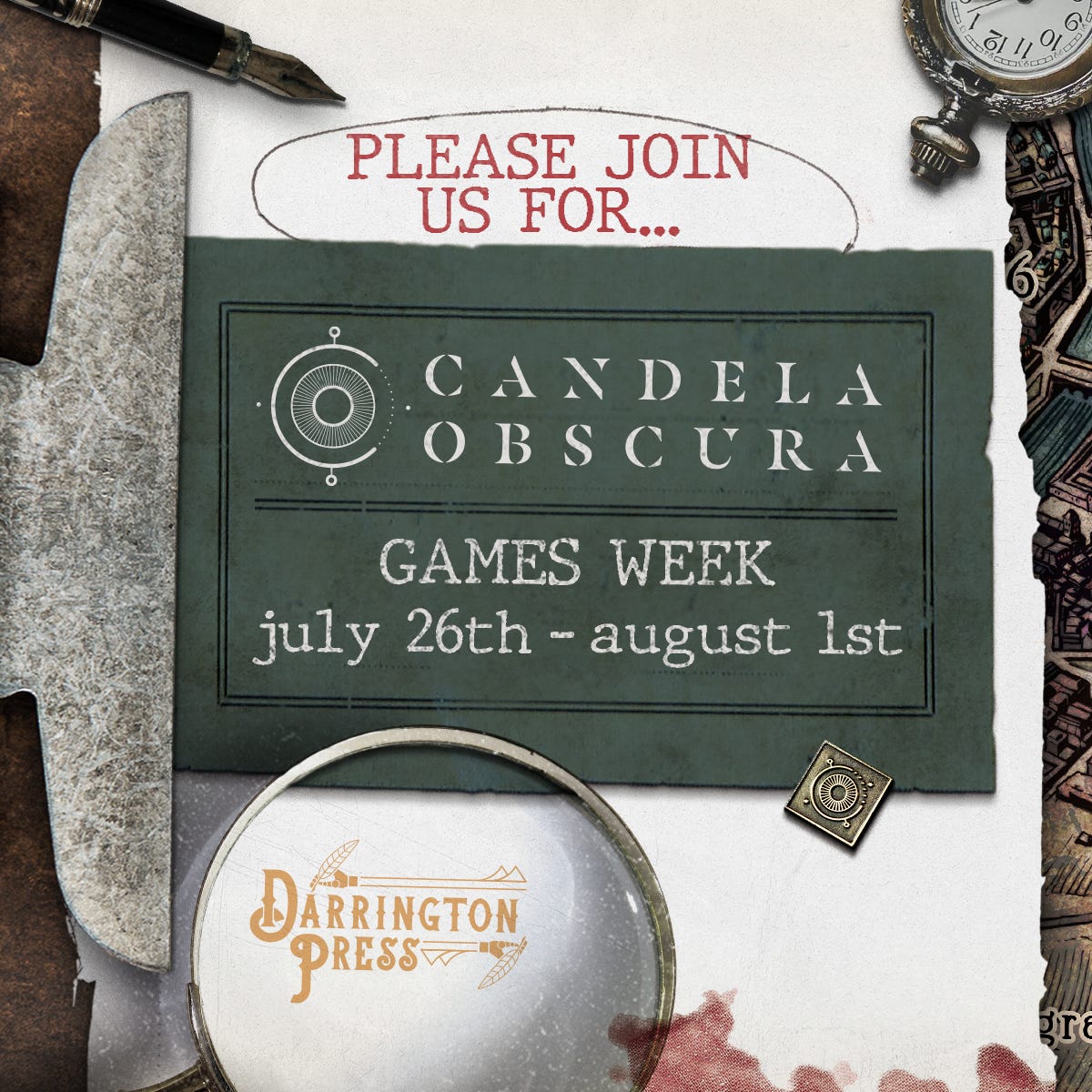

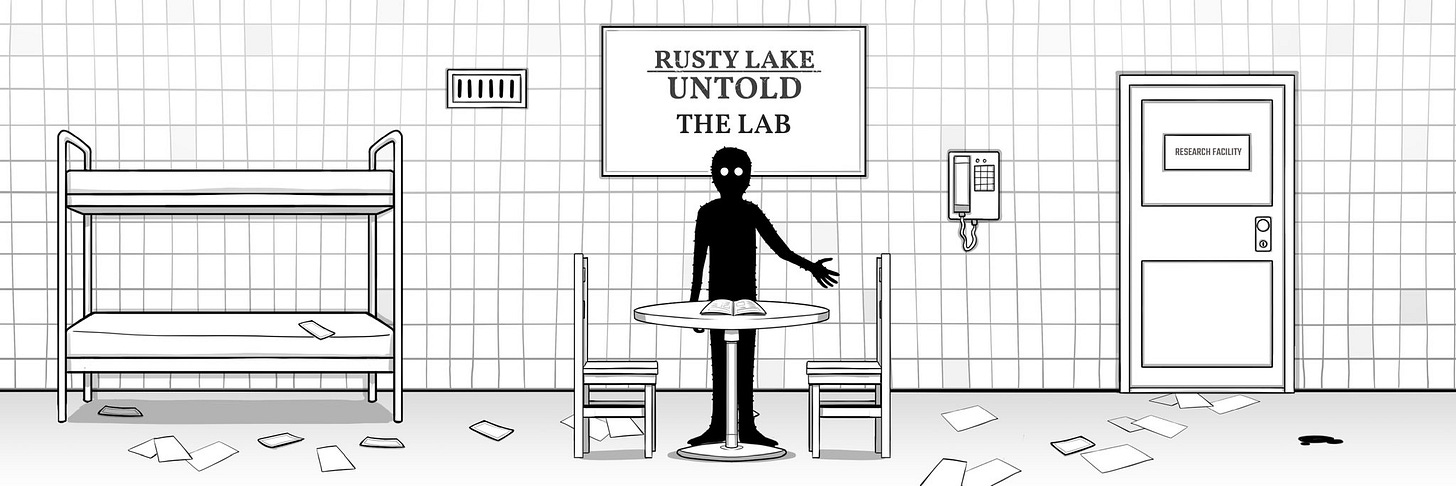

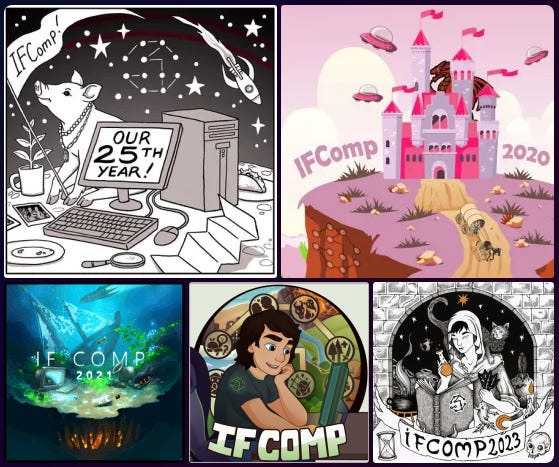
I love the unique gaming culture of Japan. Makes me want to head back there and try everything out.
Meow Oracle is a game in which you arrange face-down cards in a 3x3 grid, following certain rules and with the option to take cards from an opponent. Your goal is to get your cards in ascending order and/or groups of colors to get points. Each cat card is a unique work of art <3